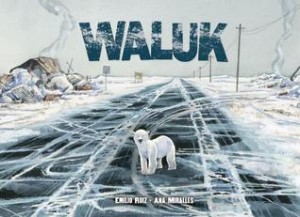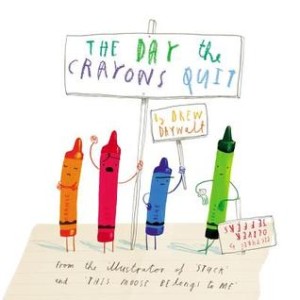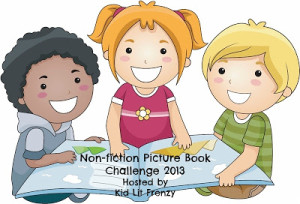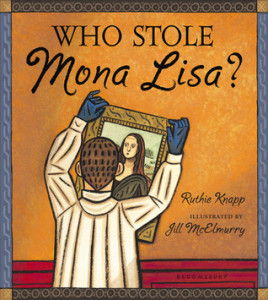Waluk
Author: Emilio Ruiz
Illustrator: Ana Miralles
Expected publication November 1st, 2013 by Delcourt
Goodreads Summary: Young Waluk is all alone. His mother has abandoned him, as is the way of polar bears, and now he must fend for himself. But he doesn’t know much about the world—and unfortunately, his Arctic world is changing quickly. The ice is melting, and food is hard to find.
Luckily, Waluk meets Manitok, a wise old bear with missing teeth and a bad sense of smell. Manitok knows many survival tricks, and he teaches Waluk about seals, foxes, changing seasons, and—when Manitok is caught in a trap—human beings. Has Waluk learned enough from his friend to find a way to save him?
My Review: I’m always a big fan of books that books that tell a great story, but also teaches the reader something – Waluk fits this description.
I love that this story is told in a graphic novel because it allows us to see what Waluk is experiencing. I think this is really important because many readers will not be familiar with the setting and animals.
Additionally, there are nonfiction aspects where global warming and human impact on polar bears is discussed even with a bibliography in the end for students who want to learn more.
Teacher’s Tools For Navigation: I would love to read this graphic novel aloud to my class just to discuss with them the environmental aspects of the book. I think the story really brings global warming and the threat polar bears feel to life. Also, the story would be a great way to discuss point of view/perspective since the story is told from Waluk’s point of view.
Discussion Questions: How is global warming threatening polar bears?; What type of character traits must Waluk have to be willing to go save Manitok?
We Flagged: Manitok “If you want to be like the great Nanook, you’ll have to feed on seal blubber and whale fat.”
Waluk “Sure. Like it’s that easy. The seals laugh at me. Not even the puny lemmings are afraid of me.”
Manitok “Nah, that’s no problem, Buddy. I’m Manitok! Descended from the legend of the great whit bears. I know how to hunt anything.”
Waluk “Really?”
Manitok “Of course! Seals, walruses, belugas, lemmings, razorbills, humans–”
Waluk “Then why are you so thin?”
Manitok “Well, it’s age… see, I’m not as good as I used to be. Frankly, it’s been a while since I’ve gorged on sea lion – taken him down with my fangs, ya know, like it’s no big deal.” (p. 18)
Read This If You Loved: Seekers (series) by Erin Hunter, Nonfiction books about global warming or polar bears, Neversink by Barry Wolverton, [For further POV discussions] Who Stole Mona Lisa? by Ruthie Knapp and The Day the Crayons Quit by Drew Daywalt
Recommended For:
**Thank you to Netgalley and Lerner Publishing Group (Graphic Universe) for providing the e-galley!**







